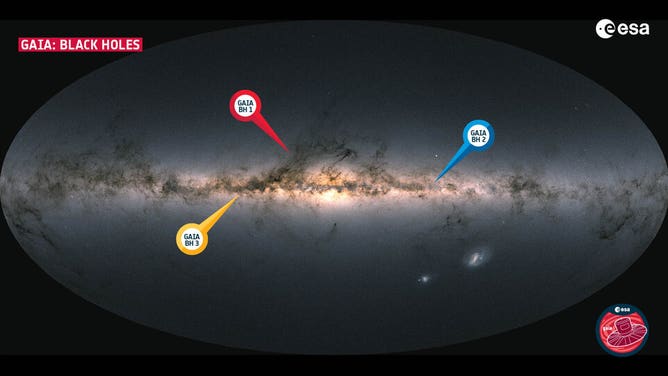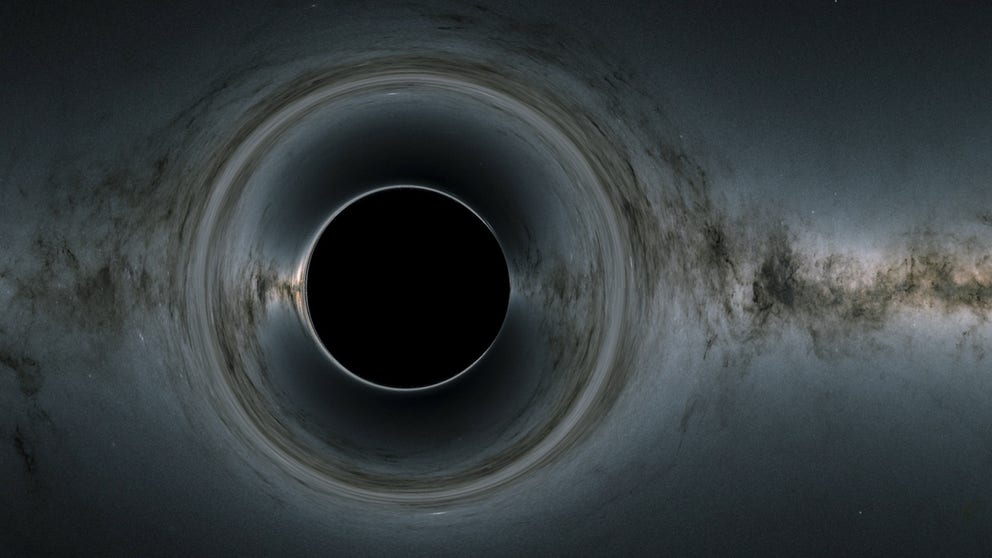New monster Milky Way black hole once-in-a-lifetime discovery, scientists say
ESA’s Gaia spacecraft is creating a 3D map of the stars in the Milky Way galaxy and beyond. Scientists say they found a dormant black hole while looking for anything out of the ordinary among the billions of stars observed by Gaia.
What is a black hole? Explaining the universe's most mysterious cosmic object
Much studied but not fully understood, black holes are among the most mysterious cosmic objects in our universe.
European scientists say they have discovered the biggest stellar black hole yet in the Milky Way, less than 2,000 light-years from Earth.
The dormant black hole known as Gaia BH3 has a mass 33 times that of the Sun. In the past, stellar black holes this massive have only been found in very distant galaxies, not our own.
According to the European Space Agency, the Gaia spacecraft science team is preparing to release the fourth round of data collected by the spacecraft. They were checking for any oddities in the motions of stars when a giant star in the constellation Aquila caught their attention.
SUPERMASSIVE BLACK HOLES: JUST HOW BIG ARE THEY?
After checking the "wobble" in the star about 1,926 light-years from Earth, the team found the star is orbitally locked with a monster black hole. This lonely black hole is dormant because its star companion is not close enough to take matter from.
The ESA said this discovery, published in the Astronomy & Astrophysics journal this week, is groundbreaking because of the black hole's mass. The average mass of known black holes in the Milky Way is around 10 times the mass of our Sun. Before Gaia BH3, the most massive black hole in our galaxy was estimated to be about 20 times the mass of the Sun.
"This is the kind of discovery you make once in your research life," said Pasquale Panuzzo of CNRS, Observatoire de Paris, in France, the study's lead author. "So far, black holes this big have only ever been detected in distant galaxies by the LIGO–Virgo–KAGRA collaboration, thanks to observations of gravitational waves."
WHAT IS A BLACK HOLE? HERE'S WHY THESE ENIGMAS OF SPACE DON'T SUCK
The newly discovered dormant black hole is the third found by Gaia. However, the plot thickened as scientists say the current understanding of how massive stars evolve and die did not explain how Gaia BH3 formed.

The three dormant black holes discovered by Gaia.
The star orbiting the black hole provided some clues. According to the study, the star is ancient, forming about 2 billion years after the Big Bang and has few elements heavier than hydrogen and helium.
"What strikes me is that the chemical composition of the companion is similar to what we find in old metal-poor stars in the galaxy," said Elisabetta Caffau of CNRS, Observatoire de Paris. "There is no evidence that this star was contaminated by the material flung out by the supernova explosion of the massive star that became BH3."
The ESA said this suggests the black hole acquired its companion star after birth, possibly from another system.
For the past 10 years, the European Space Agency's Gaia spacecraft has been creating a 3D map of billions of stars throughout the Milky Way galaxy and beyond. This star census will help scientists answer questions about our home galaxy's origin and evolution.
The Gaia collaboration team expects to uncover more black holes in future data.
